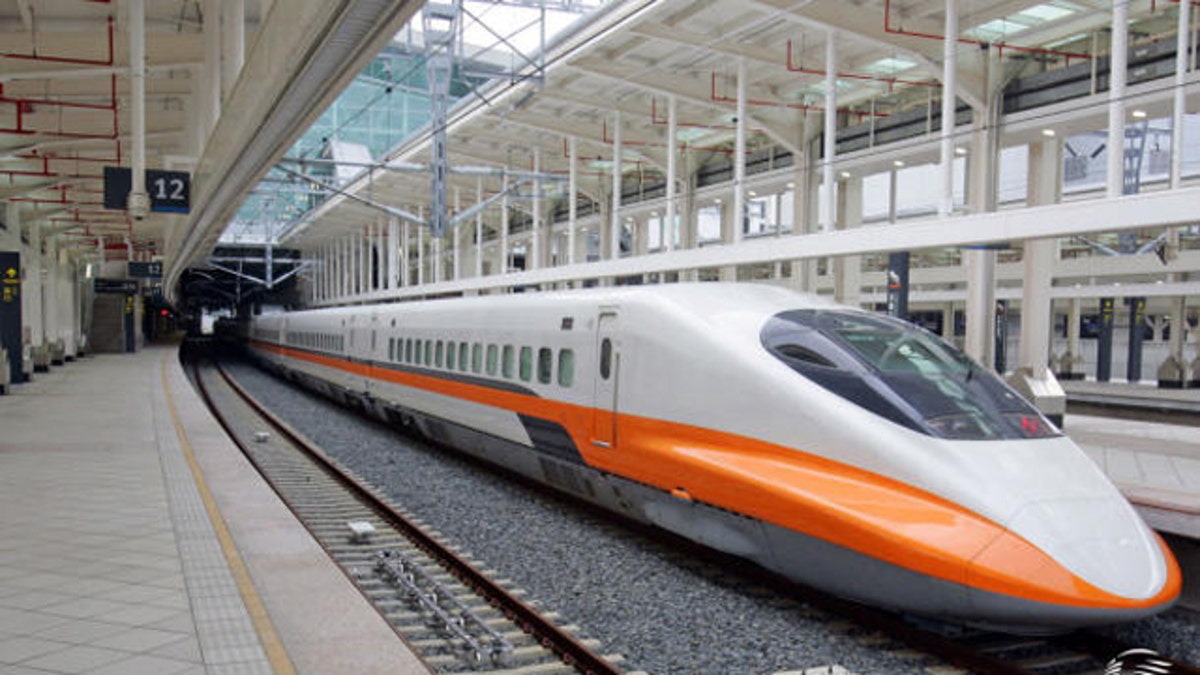
One of Taiwan's high-speed trains, capable of travelling at nearly 200 mph. (Taiwan High Speed Rail Corporation)
President Obama has announced a multibillion-dollar investment in high-speed railroads that could travel as fast as 200 miles per hour. Could high-speed rail become America's new Eisenhower Interstate, criss-crossing the nation and whisking us from Baton Rouge to Bethesda in mere hours? And does America have the technology and the know-how to build such a system?
"The talent is here in the U.S. to build high-speed rail networks," says Thomas D. Simpson, executive director of Washington D.C.'s Railway Supply Institute. "All we've ever needed is the wherewithal to do it. And 8 billion is going to get us started."
High-speed rail is an umbrella term that encompasses trains that travel over 90 mph, and as fast as 200 or more. And it's very real: Today, French TGV trains can take you from Paris to Lyons -- a journey of 250 miles -- in two hours. Amtrak's Acela covers the same distance in five hours, and that's the best the U.S. has to offer at present. China's high-speed trains cover 664 miles in just 3 hours, averaging a stunning 217 mph.
High-speed trains are very different from existing passenger trains (and from maglev trains, in which magnetic forces lift, propel, and guide a vehicle over a guideway at up to 300 mph): The rails they ride on need to be electrified and require different grades, plus federal regulations dictate that trains that travel over 110 mph can't go over graded crossings. That means they'll require entirely new tracks.
"There's a paradox," explains Rick Harnish, executive director of the Midwest High-Speed Rail Association. "High-speed rail on the one hand is a just a train. But when you combine better trains and better tracks together, you get something that's completely transformational in the way cities interact and people travel."
In addition, high-speed rail has the potential to reduce oil use by 125 million barrels a year, according to Environment America. Only foreign companies like France's TGV, Canada's Bombardier, and Germany's Siemens manufacturer the trains, though many operate manufacturing facilities here in the U.S. Harnish thinks given the demand, American companies have plenty of room to innovate in this market.
"We don't have an industry, so we're not going to start it new? It's silly," says Harnish. "What happened in Spain and Korea and China was that a foreign manufacturer came in and built the first sets. Then the industry grew up to build their own sets."
So how long will it take to criss-cross the nation with these new high speed tracks?
"It's impossible to say at this point," cautions Rob Kulat, a spokesman for the Federal Railroad Administration, warning that such a system could take 30 or more years to build out. Kulat notes that a lot of the infrastructure is shared with freight trains, so we may need double, triple or even quadruple tracks laid side by side. And signal controls need to be upgraded. Plus there are natural barriers, such as the tunnel in the Northeast corridor that hampers Amtrak's Acela train.
The other big hindrance is land use. Harnish and Kulat both note that eminent domain laws would need to be invoked in order to gather up the land such a high-speed network would require. But the main problem seems to be one of funding, rather than knowledge.
"There is the expertise for TGV like trains in this country," says Simpson. Americans could build these trains, if state and federal agencies invested in the industry. "Spain has spent over 200 billion in developing intercity rail. TGV is similar, because Germany has spent similar money. Even the Obama administration would admit 8 billion is just a down payment."
